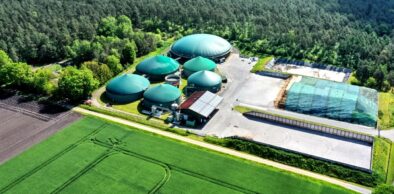February 16, 2024
How Can You Fly Carbon-Free?
Aviation accounts for around 3% of global carbon dioxide emissions. If the world is serious about reducing carbon emissions this century, air travel will need to decarbonize. This is not easy.
Ships can sail. Cars can be electrified. Neither option currently works for planes. Sails for obvious reasons. Batteries because they are heavy, not energy dense, have a limited range and can be prone to fires. For the foreseeable future aircraft will have to run on liquid transport fuels.
Conventional jet fuel is a fossil fuel, derived from distillation of crude oil. In the short term this leaves jet fuel made from renewable low-carbon sources as the only viable option to decarbonize air travel. This sort of jet fuel is commonly referred to as Sustainable Aviation Fuel, or SAF.
About SAF
SAF covers a range of slightly different fuels, each made from different feedstocks using different methods resulting in liquids with slightly different properties.

SAF can be made from a wide range of renewable or waste feedstocks, including plant oils, waste oils, agricultural residues, forestry waste, energy crops, conventional sugars or even CO2 captured from the atmosphere. There are already seven fully-approved production pathways for making SAF; which one is used at each production site depends on feedstock availability, local regulations, sustainability objectives and production costs.
In 2024, most SAF made by the HEFA (Hydroprocessed Esters and Fatty Acids) pathway, which uses waste fats, oils and greases as a feedstock. HEFA requires lower capital expenditure than other methods, the feedstocks are readily available and they match the energy density of fossil fuels. SAF made by HEFA can be blended up to a 50/50 mix with conventional jet fuel and the SAF typically results in a carbon emission saving of 70% across the whole lifecycle of the fuel.

Another widely used production pathway is the ATJ (Alcohol-to-Jet), which involves converting sugary or starchy biomass, such as sugarcane and corn grain, into ethanol or other alcohols through fermentation. These alcohols are then transformed into SAF, which again can be used in a 50/50 blend with conventional jet fuel. Other more advanced forms of SAF exist, each at different stages of development.
Perhaps the route with the greatest excitement is Power-to-Liquid (PtL) SAF. This is where synthetic SAF is made from reacting green hydrogen (made using renewable energy powered electrolysis) with captured carbon dioxide. This pathway benefits from low feedstock availability constraints and could remove carbon dioxide from the atmosphere to make fuel. However, at the time of writing in 2024 it is an expensive method of making SAF and isn’t yet commercially viable at scale.
SAF Advantages
Combustion of SAF releases comparable amounts of carbon dioxide to conventional jet fuel, but SAF has the advantage across its full lifecycle. When biomass is used to make SAF, the plants absorb carbon dioxide as they photosynthesize, which counteracts the carbon dioxide emissions during the flight powered by SAF. Using SAF therefore leads to significant carbon dioxide emission reductions, depending on the choice of feedstock, production process used, logistics and land use changes associated.

More advanced forms of SAF which don’t rely on biomass as a feedstock could achieve better results still, perhaps reducing carbon dioxide emissions by perhaps 80-100% across the fuel’s lifecycle. PtL SAF could even result in a truly carbon-neutral renewable jet fuel.
SAF has further advantages. It’s compatible with current airplane engines and current fuel infrastructure, pipelines and tanks. This means that airline manufacturers and operators, oil companies, jet fuel suppliers and airports don’t need to invest heavily to become more sustainable. They can just “drop in” the fuel immediately.

SAF can be blended with conventional jet fuel in varying proportions (typically 30-50%) depending on how it’s made. Some SAF can be used without blending at all.
SAF Disadvantages
SAF has huge potential, but there are still obstacles to overcome. Feedstock availability is a constraint to widespread use. Air travel is huge (and growing): there are more than 100,000 commercial flights per day burning around 1b litres of fuel. There simply isn’t enough waste cooking oil or plant-derived ethanol in the world to power this. In 2022 global SAF production was just 300m litres in the year. This means that SAF accounted for less than 0.1% of global jet fuel demand.

This implies the world needs a huge ramp up in factories and feedstock to make enough SAF. There’s plenty of room for growth across all SAF feedstocks and pathways in the coming years. If you’re a farm business or processor, the aviation industry needs you and your products. The only question is whether you’ve realized this yet.
If you’d like help exploring how you can enhance human mobility while also helping to mitigate carbon emissions, please talk to the CZ Advise team.
SAF is also expensive.
The exact cost to make SAF depends on the production pathway used and the cost of the feedstock. Today, conventional jet fuel costs around $900 per tonne, compared to HEFA SAF at around $1,000 per tonne, ATJ at $2,500 per tonne and Power-to-Liquid at best at $2,000 per tonne, but more commonly at $3,000-$5,000 per tonne.

As SAF technology matures these costs should converge with conventional jet fuel. We’ve seen analogous cost declines in technologies like lithium batteries and solar energy generation in recent decades, but it’s clear SAF is still in its infancy.
Critics also point out that most SAF isn’t fully carbon neutral. Airlines using 100% SAF will still emit greenhouse gases – from procuring feedstock, processing it into fuel and transporting this fuel to where it’s needed, for example. In addition, any form of high-altitude, high-temperature combustion is likely to form NOx, which can contribute to the formation of smog and acid rain.
SAF Prospects
In the short to medium term, SAF is the only realistic option to reducing aviation sector carbon emissions. But its rollout means more expensive flights. Humans have used fossil fuels for decades because they are cheap to extract and energy intensive. Today, SAF is more expensive to make, and this will continue to be the case until the technology matures, which might take decades. It’s not clear that people will pay more money to limit carbon emissions when they fly.
Ramping up production will also be challenging. Government incentives for this are starting to come through. For example, the US Inflation Reduction Act offers a Blenders Tax Credit to a producer/blender of SAF of $1.25/gallon SAF, so long as the SAF achieves a 50% reduction in greenhouse gas emissions over its lifecycle. For each additional 1% reduction in emissions the credit increases by $0.01.
Meanwhile in Europe the EU Commission introduced a proposal called the ReFuelEU initiative in 2021 to promote the adoption of SAF. Aviation fuel suppliers will be mandated to blend a minimum proportion of SAF into jet fuel at EU airports, including a specific share of synthetic fuel. This mandate should come into force in 2025, starting at a minimum SAF volume of 2%. There will then be incremental increases every 5 years, ultimately reaching a minimum blend of SAF in jet fuel of 63% by 2050, including 28% synthetic fuels.
Conventional jet fuel will also increasingly have to account for the price of carbon. One tonne of jet fuel emits around 3.16 tonnes of carbon dioxide. At the time of writing, carbon allowances under EU-ETS cost around €63/tonne. This means the carbon price of each tonne of jet fuel is €200, or $215. Jet fuel today without including the cost of carbon is $890/mt. The European Commission intends that free carbon allowances for aviation will be phased out in 2026; at today’s prices conventional jet fuel would cost nearly 25% more, at $1,105/tonne. This would help SAF become cost-competitive.
Even in cases where SAF remains more expensive than conventional jet fuel, the low blend levels envisaged for the coming years mean that the cost increases to airlines could be modest. SAF which costs twice as much as conventional jet fuel will increase fuel costs by 10% at a 10% blend. Fuel accounts for 15-30% of an airlines costs. Taking a worst-case scenario where fuel accounts for 30% of costs, adding a 10% SAF blend would increase overall airline costs by just 3%. Fuel prices, carbon prices and exchange rates are all dynamic and will continue to change in the future. SAF technology continues to improve. It’s not hard to imagine the additional cost to the consumer of SAF being so small as to be unnoticeable.
In the much longer term, decades in the future, it’s possible aviation decarbonization may move beyond SAF. Perhaps there’s a future where short haul flights are able to safely and efficiently use batteries for electric power, while long haul flights use green hydrogen fuel cell electric power. It’s likely that battery flights will be short haul at first given batteries’ low energy density. Long haul flights will come much later, so will also be dependent on SAF for much longer.
In the meantime the technology to start decarbonizing exists and is ready to use. All that’s missing is the investment in ramping up production.
If you’d like to join the SAF revolution, talk to us today.


